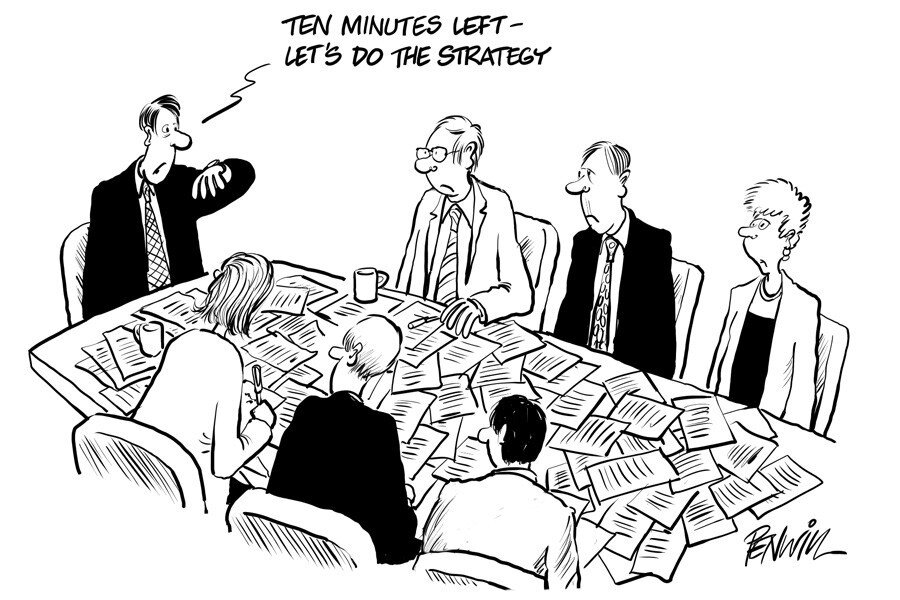It’s that time of year — the mad dash to get everything figured out for the next year. Planning, budgeting, and roadmapping season is in full force. So let’s make it our New Year’s resolution for 2020 to do product strategy right.
Read MoreFirst, identify key customer segments and their needs. Review the data and see where you are winning and retaining customers. Is there room for improvement?
Read MoreYou’re efficiency focused. You see how to deliver value faster to customers by shortening feedback loops and sharing knowledge within the org. And assuming you’ve allocated — or are considering — a 2020 headcount for Product Operations, how do you find the right person? What are the right skills and experiences for this hire? How do you source candidates?
Read MoreProduct leaders reach out to us at Produx Labs to understand how Product Operations can impact their org — and recommendations on what to look for in a hire. Recently, we had a thought-provoking discussion with Oji Udezue, VP of Product at Calendly, about their first product operations hire.
Read MoreVision and strategic intents are core to product planning. You need to know where you’re going — and why. Another key element to successful planning, at any timeframe, is good data around where you are right now.
Read MoreGrowth is rightfully the number one priority for start-up and scale-up software companies, but upon nearing an exit, establishing a path to profitability becomes the main focus. When that horizon nears, costs need to be addressed…
Read MoreThe job of a product leader is to provide the vision, the goals, and the guardrails. As you kick off your annual planning process, you need to get alignment around what’s your most important thing: your north star.
Read MoreIf you’re enterprise, you typically have a large portfolio of products that all need work done to them, but it has to be balanced with your budget. Providing structure around that mess is not enough. You need to have a framework to know if they are the right choices for your business. You need this person to not just prioritize, but make a product strategy.
Read MoreI’ve often said that one of the biggest benefits to being a Product Manager for B2B SaaS products is that your customers generally stay with you for at least 3 years, if not 5 or more. That “stickiness” is inherent for a business tool because large companies don’t want to invest in change management every few months or even every year. Why? Because migrating between systems can be a huge time suck for IT teams and the other individuals who use the tools. It’s rare the the ROI for switching makes sense.
Read MoreThis past week I was chatting with one of our clients about getting the development team involved earlier on in the product design. I’m a huge advocate for engineers having input early on and think it adds a lot to solution design.
Read MoreI’m excited to see a number of companies automating their operational product insights (“automated product operations” for short). Their product leaders had been running a mile a minute with multiple and competing priorities. Product and data were limited so prioritization was made based on the most critical and visible issues.
Read MoreIdeally, if you have a portfolio you’d know each of these metrics by product and other relevant segmentation to your company such as geographic or customer size diversity, but I thought this was a solid starting ground for most conversations.
Read MoreEvery company’s context is going to be different and there are many potential paths to top-line growth. The right set of revenue metrics will help you better understand your current position and identify the right growth levers to pull for your company. Some things you might be thinking about… Must you increase the size of your customer base? Do you need to make more money out of each customer? If the latter, should you be trying to increase the value of each customer with new or better products and services, or should you be focused on retaining customers for longer?
Read MoreIf Product Management is both an art and a science, evaluating candidates cannot be something which is 100% objective. That hasn’t stopped people from making millions writing books about acing the PM interview at places like Google or Amazon. This guide isn’t for job seekers, it’s for interviewers, though it could be used by either. It’s particularly targeted at CEOs and other leaders who have not hired a product person before.
Read MoreIf your product is anything more than a week old, there is Tech Debt. What is Tech Debt? How does it hurt your Product? What should you do about it?
Read MoreKeeping remote teams connected is a challenge for any distributed company, but what if EVERYONE was remote?
Read MoreAs a growth stage company, you have found product-market fit and are now scaling. Congrats! Now, you need to assess your products on a regular and frequent basis, as you are considering different directions (e.g. new products, M&A, etc) to focus your resources for growth.
Read MoreThe point of Product Management is not to put things in JIRA in a specific format, use a specific framework for writing out goals, or make sure your developers have full backlogs. The point of Product Management is to create valuable products that customers love.
Read More


















